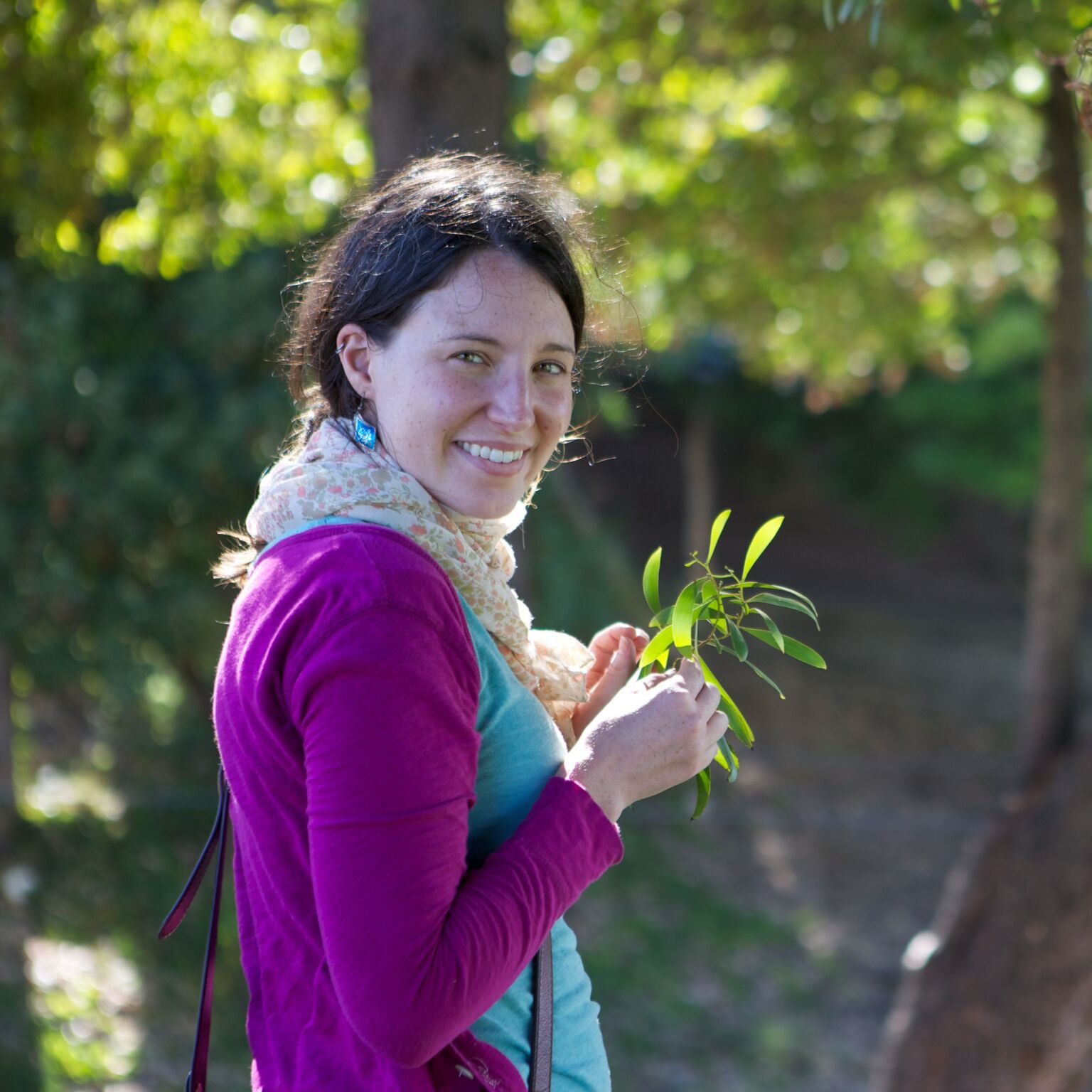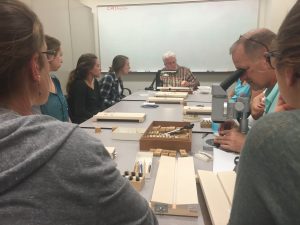Three new publications from the lab of Louise Lewis:
1. Khan-Bureau D.A., E.A. Morales, L. Ector, M.S. Beauchene & L.A. Lewis. 2016. Characterization of a new species in the genus Didymosphenia and of Cymbella janischii (Bacillariophyta) from Connecticut, USA. European Journal of Phycology 51: 203–216. pdf
Abstract reads:Two non-native stalk-forming diatoms that were recently observed in the West Branch of the Farmington River, a tributary of the Connecticut River in Connecticut (USA), are characterized morphologically and barcode marker sequences were obtained for each of them. Cymbella janischii, the dominant stalk-forming species during the summer of 2012, previously had not been found in the northeastern USA. Samples of C. janischii were examined microscopically and used to obtain four sequences of the barcode marker, the V4 region of the 18S rDNA gene. Phylogenetic analysis indicated that the four independent sequences of C. janischiiwere distinct from, but most closely related to, published sequences of C. janischii from Idaho and C. mexicana from Texas, USA. A second non-native stalk-producing diatom, resembling Didymosphenia geminata, was found in November 2012 – June 2013 and first reported as Didymosphenia sp. Over this period, the observed cells had a compressed morphology and were consistently small compared with D. geminata. Sequences of the V4 region, obtained from three independent direct polymerase chain reactions (PCR) of single cells isolated from the Connecticut samples, indicated a close relationship to three published sequences of D. geminata from Italy, New Zealand and the USA, and to D. siberica and D. dentatafrom Russia. Frustules of the cells used in the PCR reactions were recovered and examined using scanning electron microscopy, providing a direct link between the observed morphology and sequence data. The morphology of the novel Connecticut Didymosphenia taxon was compared with that of other Didymosphenia taxa, being most similar to D. pumila, D. laticollis, D. grunowii and smaller cells of D. geminata. Didymosphenia sp. had a triundulate morphology with a consistent length of 40–60 µm. Given the unique morphological features of this diatom, it is proposed as a new species, Didymosphenia hullii Khan-Bureau, sp. nov.
2. Watanabe S., K. Fučíková, P.O. Lewis & L.A. Lewis. 2016. Hiding in plain sight: Koshicola spirodelophila gen. et sp. nov. (Chaetopeltidales, Chlorophyceae), a novel green alga associated with the aquatic angiosperm Spirodela polyrhiza. American Journal of Botany 103: 865–875. pdf
The abstract reads: Discovery and morphological characterization of a novel epiphytic aquatic green alga increases our understanding of Chaetopeltidales, a poorly known order in Chlorophyceae. Chloroplast genomic data from this taxon reveals an unusual architecture previously unknown in green algae. Using light and electron microscopy, we characterized the morphology and ultrastructure of a novel taxon of green algae. Bayesian phylogenetic analyses of nuclear and plastid genes were used to test the hypothesized membership of this taxon in order Chaetopeltidales. With next-generation sequence data, we assembled the plastid genome of this novel taxon and compared its gene content and architecture to that of related species to further investigate plastid genome traits. The morphology and ultrastructure of this alga are consistent with placement in Chaetopeltidales (Chlorophyceae), but a distinct trait combination supports recognition of this alga as a new genus and species—Koshicola spirodelophila gen. et sp. nov. Its placement in the phylogeny as a descendant of a deep division in the Chaetopeltidales is supported by analysis of molecular data sets. The chloroplast genome is among the largest reported in green algae and the genes are distributed on three large (rather than a single) chromosome, in contrast to other studied green algae. The discovery of Koshicola spirodelophila gen. et sp. nov. highlights the importance of investigating even commonplace habitats to explore new microalgal diversity. This work expands our understanding of the morphological and chloroplast genomic features of green algae, and in particular those of the poorly studied Chaetopeltidales.
The abstract reads: On the basis of prior phylogenetic analyses placing Gloeomonas as a lineage within the very diverse genus Chloromonas, it was hypothesized that the morphologically distinct Gloeomonas, bearing widely spaced basal bodies, evolved from ancestral organisms like Chloromonas. In addition, the phylogenetically related Chloromonas (Cr.) rubrifilum, was expected to possess traits intermediate to the two forms. To test these hypotheses, we performed detailed transmission electron microscope analysis on nine species of these genera. The species were divided into two categories on the basis of ultrastructural features: group 1, consisting of four diverse species of Chloromonas and Ixipapillifera, had a V-shaped basal body arrangement, and group 2, of Cr. rubrifilum and four Gloeomonas species, forming a single clade possessing widely spaced basal bodies. Members of group 1 commonly had a simple, flat plate-like distal connecting fiber (dcf), three or sometimes two microtubules in the sinister root, continuous dexter and sinister striated microtubule-associated fibers (SMAFs), and a coarsely striated proximal fiber (CSPF) at the posterior-most regions of the basal bodies and probasal bodies, but lacked proximal and median proximal connecting fibers. Group 2 inherited these features, but had novel traits including the elongation and modification of the dcf, SMAFs, and CSPF that occurred with separation of basal bodies during growth, a dcf-associated layered structure, as well as protruding flagellar collars. The ultrastructural traits of Gloeomonas are interpreted as being evolutionarily modified from an ancestral Chloromonas morphology. Specific ultrastructural features were determined to be useful in characterizing these genera. Cr. rubrifilum of group 2 was not intermediate morphologically, but possessed the traits of Gloeomonas; thus G. rubrifilum comb. nov. was proposed.
3. Watanabe S., H. Nozaki, T. Nakada & L.A. Lewis. 2016. Comparative ultrastructural analysis of Chloromonas and Gloeomonas: Tracing the origin of Gloeomonas-specific flagellar apparatus traits and a proposal for Gloeomonas rubrifilum comb. nov. Phycologia 55: 585–601. pdf
 Robert S. Capers (CONN’s collection manager) and Nancy G. Slack are being recognized by the New England Botanical Club’s Merritt Lyndon Fernald Award for the Best Paper published in Rhodora Volume 118 (2016) for their paper entitled “A baseline study of alpine snowbed and rill communities on Mount Washington, NH” (Rhodora 118: 345–381). pdf. CONGRATULATIONS
Robert S. Capers (CONN’s collection manager) and Nancy G. Slack are being recognized by the New England Botanical Club’s Merritt Lyndon Fernald Award for the Best Paper published in Rhodora Volume 118 (2016) for their paper entitled “A baseline study of alpine snowbed and rill communities on Mount Washington, NH” (Rhodora 118: 345–381). pdf. CONGRATULATIONS Dr.
Dr. 